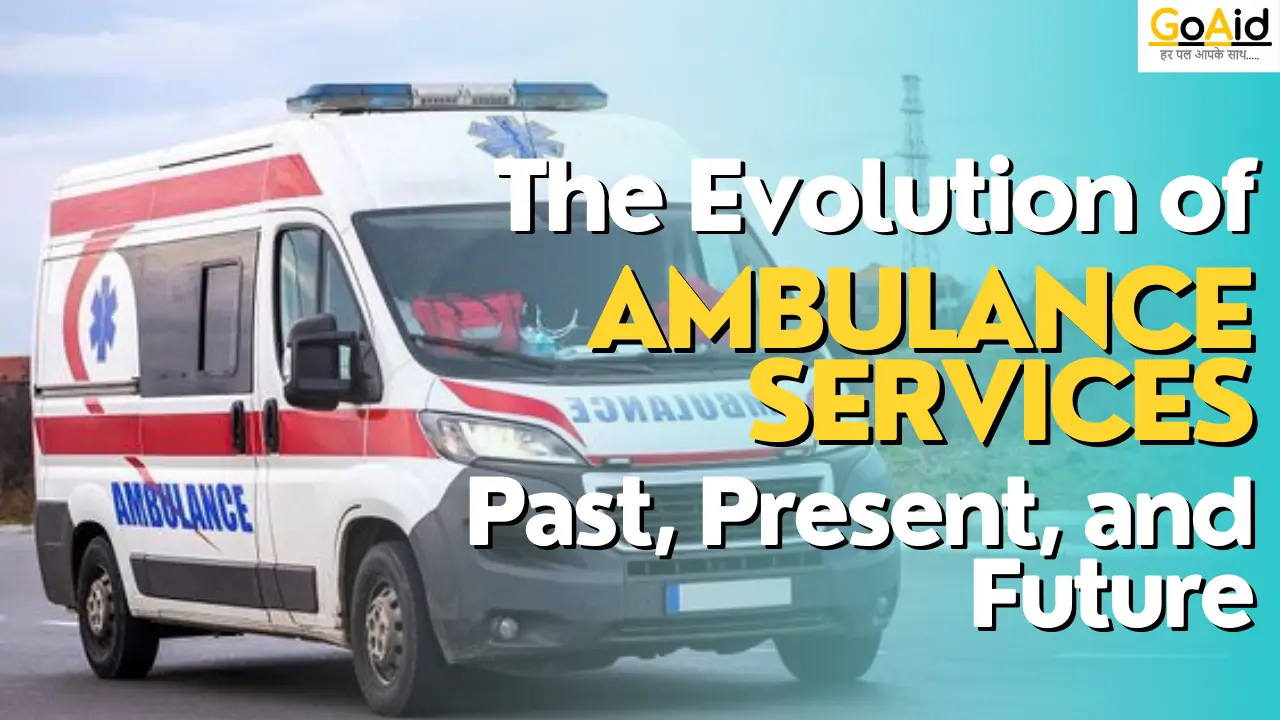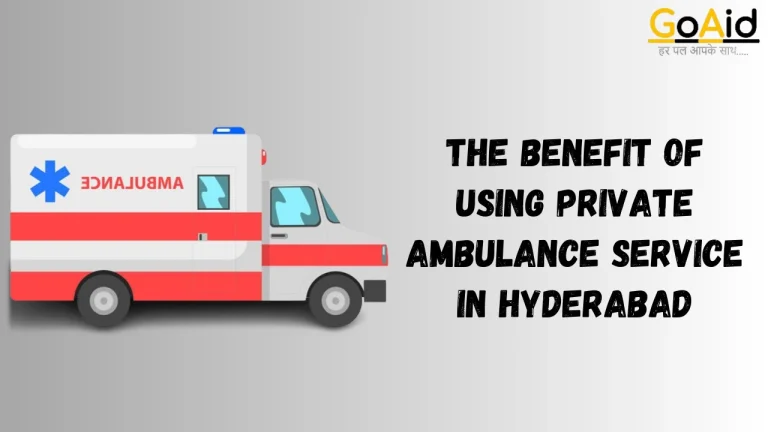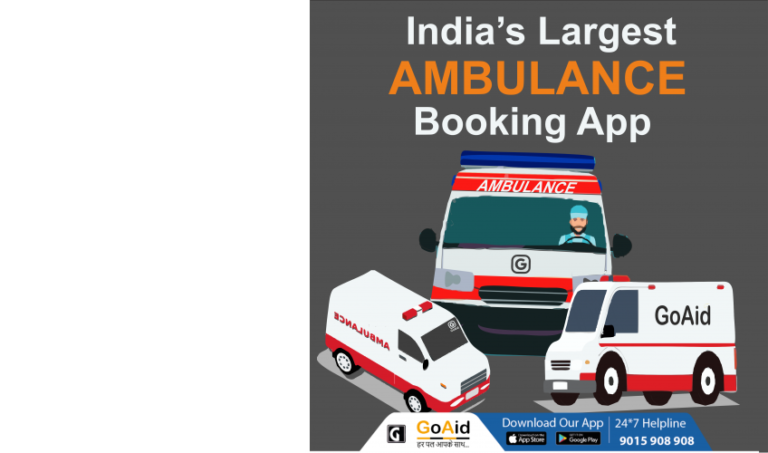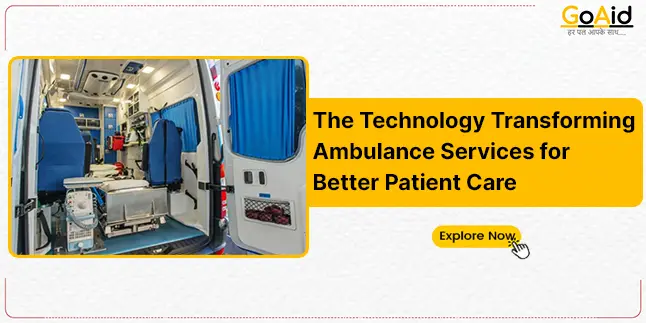In the world, there are so many instances where ambulance services played a crucial role in saving countless lives of common as well as VIP persons. These events force us to know all the history of ambulance services. Do you know the history and The Evolution of Ambulance Services? If you donŌĆÖt and want to know about it, then you are at the right place today!
In this blog, we have added all the important details about the history of ambulance services with their chronological evolution process. If you also want to know about the Evolution of Ambulance Services in the world, read this blog to the end.
So, letŌĆÖs start-
What is an Ambulance Service?
An ambulance service is a crucial component of the emergency medical services (EMS) system, dedicated to providing urgent medical care and transportation for individuals experiencing medical emergencies. These services utilize specially equipped vehicles, known as ambulances, staffed by trained medical personnel such as paramedics and emergency medical technicians (EMTs).
Ambulance services respond to emergency calls, perform on-site medical interventions, and transport patients to healthcare facilities for further treatment. They play a vital role in saving lives and reducing the severity of injuries by delivering timely and effective pre-hospital care. Modern ambulance services also support non-emergency medical transport and inter-facility transfers, ensuring comprehensive medical support for the community.
History of ambulance services in Chronological Order – Timeline of ambulance services
Ambulance services have evolved dramatically from their harsh beginnings to the sophisticated, technology-driven systems in place today. Today, ambulance services are playing a vital role in emergency medical response and patient care. This is a chronological order of the history of ambulance services:
Early Beginnings (Ancient Times – 18th Century)
- Ancient Rome: The earliest recorded use of ambulances can be traced back to the Roman Empire, where carts were used to transport injured soldiers from the battlefield.
- Medieval Era: During the Crusades, the Knights Hospitaller provided rudimentary ambulance services, transporting the injured to hospitals.
- 1487: The Spanish army used ambulances, or “ambulances,” to evacuate wounded soldiers during the Siege of M├Īlaga. These were essentially horse-drawn carts.
18th Century
- 1767: French military surgeon Dominique-Jean Larrey is credited with developing the first modern ambulance service. He introduced the “flying ambulance” (ambulance volante) during the Napoleonic Wars, which were horse-drawn wagons designed to rapidly transport wounded soldiers from the battlefield to field hospitals.
19th Century
- 1832: During a cholera outbreak in London, the first civilian ambulance service was established, primarily for the transport of infectious patients.
- 1865: The first hospital-based ambulance service in the United States was initiated by the Commercial Hospital in Cincinnati, Ohio.
- 1869: Bellevue Hospital in New York City started its own ambulance service, featuring horse-drawn wagons equipped with medical supplies and staffed by medical personnel.
Early 20th Century
- World War I: Motorized ambulances replaced horse-drawn wagons, significantly improving the speed and efficiency of medical evacuation on the battlefield.
- 1920s: Civilian ambulance services began to adopt motorized vehicles, equipped with more advanced medical supplies and equipment.
Mid 20th Century
- World War II: Further advancements in ambulance services occurred, including the development of air ambulances for rapid evacuation and the use of radio communication for coordination.
- 1960s: The introduction of CPR and the establishment of paramedic programs marked significant advancements in pre-hospital care. Ambulances were increasingly staffed with trained medical personnel capable of providing advanced medical interventions.
Late 20th Century
- 1970s: The EMS system was formalized in many countries, with standardized training for EMTs and paramedics. The development of modern, fully equipped ambulances became more common.
- 1980s: Improvements in ambulance design and equipment, such as defibrillators and advanced life support (ALS) units, enhanced the level of care provided during transport.
Read More: Introduction to the Difference between BLS Ambulance and ALS Ambulance
21st Century
- 2000s-Present: Technological advancements have continued to shape ambulance services, with the integration of telemedicine, GPS navigation, and electronic health records. Modern ambulances are equipped with state-of-the-art medical technology, ensuring high-quality pre-hospital care.
The first recorded ambulance service
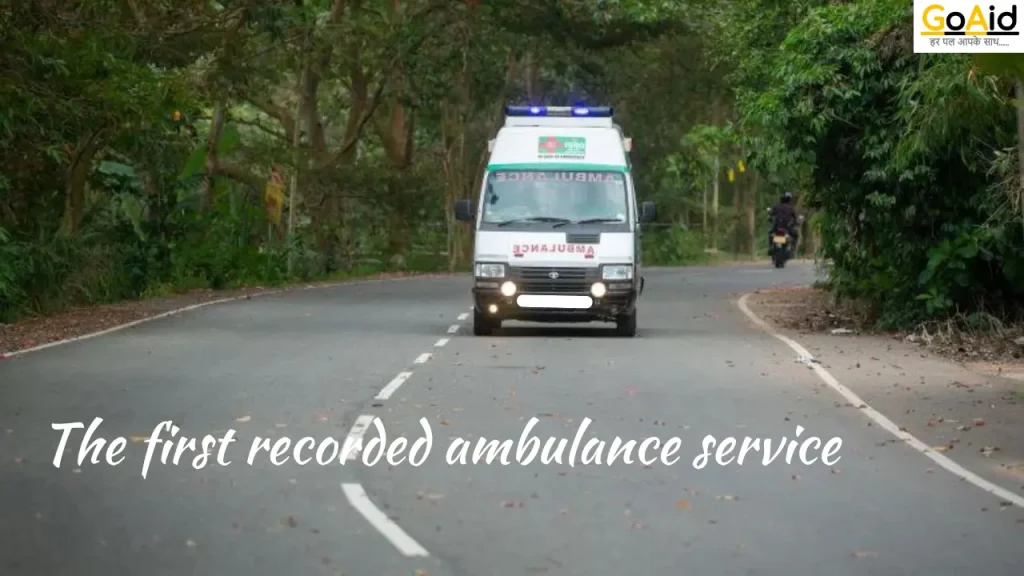
The first recorded ambulance service in the United States was established by Bellevue Hospital in New York City in 1869. This pioneering initiative marked the beginning of organized, systematic pre-hospital emergency care, laying the groundwork for modern ambulance services.
Background and Context
Historical Context:
- In the mid-19th century, urban areas like New York City faced growing public health challenges, including frequent accidents, epidemics, and the general lack of organized emergency medical services.
- The need for a reliable and systematic approach to transporting injured or ill individuals to hospitals was becoming increasingly evident.
Bellevue Hospital:
- Established in 1736, Bellevue Hospital is one of the oldest public hospitals in the United States. By the 1860s, it had developed into a major medical institution, known for its innovative approaches to medical care.
Establishment of the Ambulance Service
Initiation:
- 1869: Bellevue Hospital officially launched the first hospital-based ambulance service. The initiative was driven by the hospitalŌĆÖs leadership, recognizing the urgent need for a dedicated system to provide rapid medical assistance and transport to the hospital.
Design and Features:
- The initial ambulances were horse-drawn carriages specifically designed for medical emergencies. These vehicles were equipped with essential medical supplies, including splints, bandages, a small supply of medications, and a stretcher.
- A distinctive feature of these early ambulances was their speed and design. They were built to be lightweight and swift, ensuring rapid response to emergencies.
Staffing and Operation:
- Each ambulance was staffed by a trained medical professional, often a surgeon, and an assistant. This team was capable of providing immediate medical care at the scene and during transport.
- Ambulances were stationed at strategic locations around the city to ensure quick response times. When an emergency call was received, the nearest available ambulance would be dispatched.
Impact and Innovations
Response to Emergencies:
- The ambulance service provided rapid response to various emergencies, including accidents, illnesses, and injuries. This significantly improved the chances of survival and recovery for many patients.
- The introduction of the ambulance service also helped reduce the time between injury and treatment, a critical factor in emergency medicine.
Public Health and Safety:
- The service played a crucial role in improving public health and safety in New York City. It provided a reliable and efficient means of transporting patients to medical facilities, thereby reducing the burden on individuals and families to find transportation in emergencies.
Legacy and Influence
- BellevueŌĆÖs ambulance service set a precedent for other hospitals and cities. The success of the program demonstrated the importance and feasibility of organized pre-hospital emergency care.
- Over time, the concept of hospital-based ambulance services spread across the United States and other countries, leading to the development of modern emergency medical services (EMS) systems.
Read More: Top 10 government cancer hospitals in Delhi
Technological and Operational Advancements
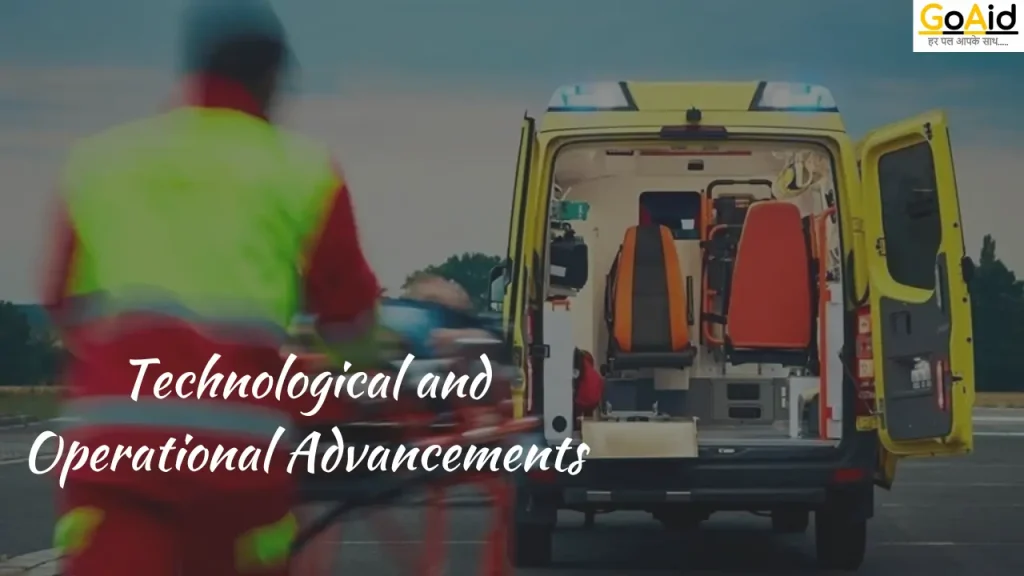
Horse-Drawn to Motorized Ambulances:
- The initial horse-drawn ambulances eventually gave way to motorized vehicles in the early 20th century, significantly improving response times and operational efficiency.
- Motorized ambulances were better equipped and could cover greater distances more quickly, enhancing the overall effectiveness of emergency medical services.
Standardization and Training:
- The establishment of the ambulance service at Bellevue Hospital highlighted the need for standardized training for ambulance staff. This led to the development of formal training programs for emergency medical technicians (EMTs) and paramedics in later years.
- The focus on training ensured that ambulance personnel were equipped with the skills and knowledge necessary to provide high-quality medical care in pre-hospital settings.
The first use of ambulances in war
The first documented use of ambulances in war can be attributed to Dominique-Jean Larrey, a French military surgeon, during the late 18th and early 19th centuries. Larrey served as the chief surgeon of Napoleon’s Grande Arm├®e and introduced the concept of the “flying ambulance” (ambulance volante) during the Napoleonic Wars.
Background
Before Larrey’s innovations, the transport of wounded soldiers from the battlefield was haphazard and inefficient. Injured soldiers often remained on the battlefield for extended periods, significantly reducing their chances of survival due to delayed medical treatment and exposure to the elements.
Dominique-Jean Larry’s Contributions
Concept Development:
Larrey recognized the need for a rapid and organized method to evacuate wounded soldiers. He developed the idea of a mobile medical unit that could quickly reach the injured and transport them to field hospitals for prompt care.
Design and Implementation:
- 1792: During the Battle of Valmy, Larrey introduced the first “flying ambulance.” These were horse-drawn wagons specifically designed to be lightweight and fast, allowing them to navigate the battlefield quickly.
- The ambulances were staffed by trained personnel, including surgeons and assistants, who could provide immediate medical care on-site and during transport.
Impact on Military Medicine:
- Larrey’s flying ambulances drastically improved the survival rates of injured soldiers by ensuring they received timely medical attention. His system emphasized the importance of speed and efficiency in medical evacuation.
- His methods set a precedent for future military medical services, highlighting the critical role of organized medical transport in warfare.
Legacy:
- Larrey’s innovations were widely recognized and adopted by various armies, influencing the development of modern military medical corps. His principles of rapid evacuation and mobile medical care remain foundational in contemporary military and civilian ambulance services.
Development of Ambulance technology
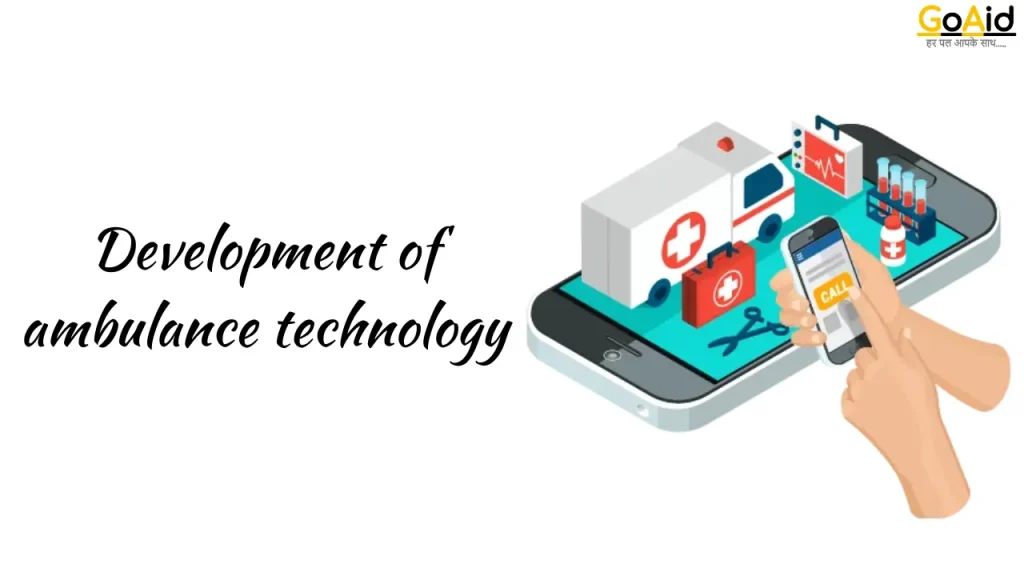
The development of ambulance technology has evolved significantly from its early days of horse-drawn carriages to the highly sophisticated vehicles equipped with advanced medical equipment we see today. Here’s a look at the major milestones in the evolution of ambulance technology:
Early Horse-Drawn Ambulances (18th – 19th Century)
- 18th Century: The first recorded use of horse-drawn ambulances was during the Napoleonic Wars, designed by Dominique-Jean Larrey. These “flying ambulances” were lightweight and fast, enabling quick evacuation from battlefields.
- 19th Century: Civilian ambulance services began adopting horse-drawn carriages. These ambulances were equipped with basic medical supplies and staffed by medical personnel, marking the beginning of organized pre-hospital care.
Motorized Ambulances (Early 20th Century)
- World War I: The introduction of motorized vehicles revolutionized ambulance services. Motorized ambulances were faster and more efficient, greatly improving the speed of medical evacuation. They were used extensively to transport wounded soldiers from the battlefield.
- 1920s: Civilian use of motorized ambulances became more common, replacing horse-drawn carriages. These vehicles were equipped with basic medical equipment and allowed for faster transportation of patients.
Mid-20th Century Advancements
- World War II: Further advancements in ambulance technology included the development of air ambulances. Airplanes and helicopters were used to evacuate injured soldiers quickly from remote or inaccessible areas. This period also saw the introduction of radio communication in ambulances, improving coordination and response times.
- 1950s-1960s: Ambulance design continued to evolve, with vehicles being equipped with more sophisticated medical equipment. The development of the cardiopulmonary resuscitation (CPR) technique and the establishment of paramedic programs marked significant advancements in pre-hospital care. Ambulances began to be staffed with trained medical personnel capable of providing advanced medical interventions.
Modern Ambulance Technology (Late 20th Century – Present)
- 1970s: The establishment of standardized training for emergency medical technicians (EMTs) and paramedics formalized the EMS system. Ambulances were designed with advanced life support (ALS) capabilities, including defibrillators, oxygen supplies, and advanced airway management tools.
- 1980s: Technological advancements led to the incorporation of computerized equipment in ambulances. Portable defibrillators, electronic monitoring devices, and improved communication systems became standard, enhancing the ability to provide high-quality care during transport.
- 2000s-Present: Modern ambulances are equipped with state-of-the-art technology, including GPS navigation systems, telemedicine capabilities, and electronic health records (EHR). These innovations have improved the efficiency and effectiveness of emergency response and patient care. Telemedicine allows paramedics to consult with doctors in real time, while EHR enables better tracking and sharing of patient information.
Future Trends
- Automated and Autonomous Ambulances: Research and development are ongoing in the field of automated and autonomous ambulances. These vehicles have the potential to further reduce response times and improve patient outcomes by utilizing advanced navigation and robotics technology.
- Enhanced Communication and Coordination: The integration of Internet of Things (IoT) devices and advanced communication networks is expected to enhance the coordination between ambulances, hospitals, and other emergency services, leading to more efficient and effective emergency medical systems.
Historical ambulance models
The evolution of ambulance models reflects significant advancements in medical care, transportation technology, and emergency response strategies. Here is an overview of some notable historical ambulance models:
Horse-Drawn Ambulances (18th – 19th Century)
- Larry’s Flying Ambulance (1792):
- Designer: Dominique-Jean Larrey
- Introduced during the Napoleonic Wars, these were lightweight, horse-drawn wagons designed to quickly transport wounded soldiers from the battlefield to field hospitals. They marked the first organized attempt at rapid medical evacuation.
- Civilian Horse-Drawn Carriages (19th Century):
- Civilian ambulance services began using horse-drawn carriages equipped with basic medical supplies. These early ambulances provided essential transport for patients to hospitals, particularly during public health emergencies like cholera outbreaks.
Motorized Ambulances (Early 20th Century)
- World War I Motorized Ambulances:
- The advent of motorized vehicles during World War I revolutionized battlefield medical evacuation. These early motor ambulances were faster and could cover more ground than horse-drawn models, significantly improving the speed of patient transport.
- 1920s Civilian Motorized Ambulances:
- Post-World War I, motorized ambulances became standard in civilian use. Hospitals began using motorized vehicles to transport patients, which were more efficient and better equipped than their horse-drawn predecessors.
Mid-20th Century Models
- World War II Ambulances:
- Both ground and air ambulances were used extensively during World War II. Ground ambulances were more rugged and better equipped, while air ambulances (planes and helicopters) allowed for rapid evacuation of injured soldiers from remote or inaccessible areas.
- 1950s-1960s Ambulances:
- This era saw the standardization of ambulance designs, with improvements in medical equipment and vehicle reliability. Ambulances began to be outfitted with more advanced medical tools, including early defibrillators and oxygen supplies.
Modern Ambulance Models (Late 20th Century – Present)
- 1970s Advanced Life Support (ALS) Units:
- The establishment of paramedic programs led to the development of ALS ambulances, which were equipped with advanced medical equipment such as defibrillators, ECG monitors, and advanced airway management tools. These units provided a higher level of pre-hospital care.
- 1980s High-Tech Ambulances:
- Technological advancements led to the incorporation of computerized equipment in ambulances. These vehicles featured portable defibrillators, electronic monitoring devices, and improved communication systems, enhancing the quality of care during transport.
- 2000s-Present State-of-the-Art Ambulances:
- Modern ambulances are equipped with state-of-the-art technology, including GPS navigation systems, telemedicine capabilities, and electronic health records (EHR). These innovations have improved response times, patient care, and coordination with hospitals.
- Specialized Ambulances:
- Neonatal Ambulances: Designed for transporting newborns in critical condition, equipped with incubators and specialized medical equipment.
- Cardiac Ambulances: Equipped with advanced cardiac care equipment, including ECG monitors, defibrillators, and medications specific to heart conditions.
- Air Ambulances: Helicopters and fixed-wing aircraft equipped to handle medical emergencies, providing rapid evacuation and transport over long distances.
Future Trends
- Automated and Autonomous Ambulances:
- Description: Research and development are ongoing for automated and autonomous ambulances. These vehicles promise to reduce response times and improve patient outcomes through advanced navigation, robotics technology, and integration with smart city infrastructure.
Impact of technology on ambulance services
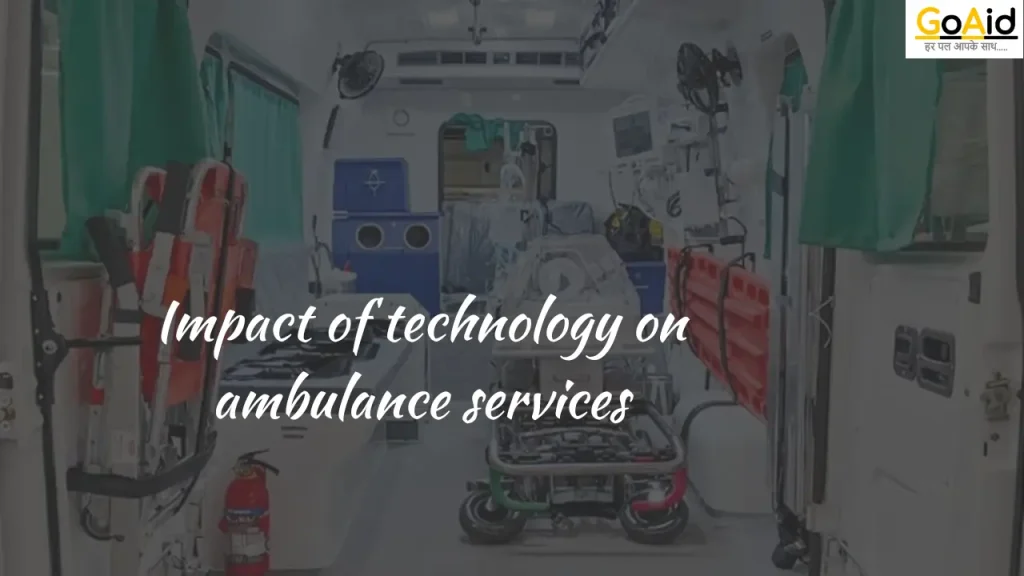
Technological advancements have profoundly transformed ambulance services, enhancing the speed, efficiency, and quality of emergency medical care. Here are the key impacts of technology on ambulance services:
Improved Response Times
GPS and Navigation Systems:
Modern ambulances are equipped with GPS navigation systems that provide real-time traffic data and optimal routing. This technology helps ambulances reach patients more quickly and navigate efficiently to hospitals.
Automated Dispatch Systems:
Advanced dispatch systems use algorithms to assign the nearest available ambulance to an emergency, minimizing response times. These systems can also prioritize calls based on severity, ensuring that the most critical patients receive immediate attention.
Enhanced Communication
Radio Communication:
The introduction of radio communication allowed for better coordination between ambulances and hospitals. This technology enabled paramedics to provide real-time updates to emergency departments, preparing them for incoming patients.
Mobile Data Terminals (MDTs):
MDTs in ambulances enable paramedics to receive dispatch information, access patient records, and communicate with medical facilities seamlessly. This technology improves the flow of information and ensures that paramedics are well-informed about patient conditions.
Telemedicine:
Telemedicine allows paramedics to consult with doctors and specialists in real time during transport. Video conferencing and data transmission enable remote guidance on complex medical procedures, improving patient outcomes.
Advanced Medical Equipment
Portable Defibrillators:
Automated External Defibrillators (AEDs) and advanced cardiac monitors have become standard equipment in ambulances. These devices enable paramedics to provide life-saving interventions for patients experiencing cardiac arrest.
Ventilators and Oxygen Delivery Systems:
Modern ambulances are equipped with advanced ventilators and oxygen delivery systems, essential for patients with respiratory distress. These devices allow for precise control of oxygen levels and ventilation, enhancing patient care.
Point-of-Care Testing:
Portable diagnostic devices, such as blood glucose monitors, portable ultrasound machines, and blood gas analyzers, allow paramedics to perform critical tests on-site. This technology provides immediate diagnostic information, guiding treatment decisions during transport.
Data Management and Patient Care
Electronic Health Records (EHR):
EHR systems enable paramedics to access and update patient medical records electronically. This technology ensures continuity of care by providing hospitals with detailed patient information upon arrival.
Real-Time Data Transmission:
Advanced monitoring equipment can transmit vital signs and other patient data to receiving hospitals in real time. This information allows emergency departments to prepare adequately for incoming patients, improving the transition of care.
Specialized Ambulances
Neonatal and Pediatric Ambulances:
Specialized ambulances equipped with incubators, pediatric ventilators, and other child-specific medical equipment provide tailored care for newborns and young patients during transport.
Cardiac and Stroke Ambulances:
These ambulances are outfitted with specialized equipment for cardiac and stroke patients, including advanced ECG machines, thrombolytic medications, and telemedicine capabilities for remote consultation with specialists.
Future Trends
Autonomous Ambulances:
Research into autonomous ambulances aims to reduce response times and improve safety. These vehicles would use advanced navigation systems and artificial intelligence to operate without human drivers, potentially enhancing efficiency and reliability.
Internet of Things (IoT):
IoT integration in ambulances connects medical devices and systems, allowing for real-time monitoring and data sharing. This technology enhances the coordination between paramedics, hospitals, and other emergency services, leading to more cohesive and effective patient care.
Key milestones in ambulance history
The history of ambulance services is marked by numerous milestones that have significantly enhanced the speed, efficiency, and quality of emergency medical care. Here are some of the key milestones:
Early Beginnings and Innovations
Ancient Rome (Circa 900 AD):
- Development: Early ambulances, such as carts and stretchers, were used to transport wounded soldiers from the battlefield.
1487:
- Spanish Military: The Spanish army used the first recorded ambulances (known as “ambulancias”) to transport wounded soldiers during the Siege of M├Īlaga. These were rudimentary horse-drawn carts.
1767:
- French Army: Dominique-Jean Larrey, a French military surgeon, introduced the concept of the “flying ambulance” (ambulance volante) during the Napoleonic Wars. These horse-drawn wagons were designed for rapid evacuation from the battlefield.
Read More: Some Important Topics
19th Century Developments
1832:
- Cholera Outbreak in London: During a cholera outbreak, the first civilian ambulance service was established in London, primarily for transporting infectious patients.
1865:
- United States: The first hospital-based ambulance service in the U.S. was initiated by the Commercial Hospital in Cincinnati, Ohio.
1869:
- Bellevue Hospital, New York City: The first organized hospital-based ambulance service was established. These horse-drawn ambulances were equipped with medical supplies and staffed by medical personnel.
Early 20th Century
World War I (1914-1918):
- Motorized Ambulances: The introduction of motorized vehicles revolutionized battlefield medical evacuation, replacing horse-drawn wagons with faster, more efficient motorized ambulances.
1920s:
- Civilian Use: Civilian ambulance services began adopting motorized vehicles, enhancing the speed and efficiency of patient transport.
Mid-20th Century Advancements
World War II (1939-1945):
- Air Ambulances: The use of airplanes and helicopters for medical evacuation was introduced, allowing for rapid transport of injured soldiers from remote or inaccessible areas.
- Radio Communication: Ambulances began using radio communication to coordinate with hospitals, improving response times and patient care.
1950s-1960s:
- Standardization: Ambulance designs and equipment became more standardized, with improvements in medical supplies and vehicle reliability.
- Paramedic Programs: The establishment of formal paramedic training programs marked a significant advancement in pre-hospital care.
Late 20th Century to Present
1970s:
- Advanced Life Support (ALS) Units: Ambulances equipped with advanced medical equipment, such as defibrillators and ECG monitors, became standard. EMTs and paramedics were trained to provide advanced medical interventions.
1980s:
- Technological Advancements: The incorporation of computerized equipment, portable defibrillators, and electronic monitoring devices enhanced the quality of care provided during transport.
2000s-Present:
- Modern Technology: Ambulances are now equipped with GPS navigation, telemedicine capabilities, and electronic health records (EHR). These innovations have improved response times, patient care, and coordination with hospitals.
Future Trends
Autonomous Ambulances:
- Development: Research is ongoing into autonomous ambulances that can operate without human drivers, potentially reducing response times and improving safety.
Internet of Things (IoT):
- Integration: IoT devices and advanced communication networks are being integrated into ambulances, enhancing real-time monitoring and data sharing between paramedics, hospitals, and other emergency services.
Enhanced Communication and Coordination:
- Advanced Dispatch Systems: The use of algorithms to assign the nearest available ambulance to emergencies, and prioritize calls based on severity, ensures the most efficient use of resources.
Also Read: Malaria and Dengue: Symptoms And Treatment
Notable figures in the history of ambulance services
The development and advancement of ambulance services have been significantly influenced by several key individuals. Their contributions range from pioneering battlefield evacuation techniques to modernizing emergency medical services. Here are some of the most notable figures in the history of ambulance services:
Dominique-Jean Larrey (1766-1842)
- Role: Chief Surgeon of Napoleon’s Grande Arm├®e
- Contributions:
- Flying Ambulances: Larrey is best known for creating the “ambulance volante” (flying ambulance) during the Napoleonic Wars. These horse-drawn ambulances were designed for rapid evacuation of wounded soldiers from the battlefield.
- Medical Organization: He introduced the concept of triage, prioritizing treatment based on the severity of injuries, a practice still in use today.
- Legacy: Larrey’s innovations greatly improved the survival rates of injured soldiers and laid the foundation for modern military and civilian ambulance services.
Jonathan Letterman (1824-1872)
- Role: Medical Director of the Army of the Potomac during the American Civil War
- Contributions:
- Letterman Plan: Known as the “Father of Battlefield Medicine,” Letterman developed a comprehensive system for medical evacuation and care. This included the establishment of dedicated ambulance corps, field hospitals, and an organized system for transporting the wounded.
- Impact: His system was first implemented at the Battle of Antietam and significantly improved the efficiency and effectiveness of medical care on the battlefield.
- Legacy: The Letterman Plan became the model for modern military medical evacuation systems.
Clara Barton (1821-1912)
- Role: Founder of the American Red Cross
- Contributions:
- Civil War Nursing: Barton provided critical medical care and supplies during the American Civil War, often working near the front lines. She was instrumental in organizing transportation for the wounded.
- Advocacy and Organization: After the war, she lobbied for the establishment of the American Red Cross, which played a vital role in disaster response and emergency medical services.
- Legacy: Barton’s efforts laid the groundwork for the integration of volunteer-based emergency medical services and disaster relief.
Edward L. Strutt (1842-1926)
- Role: Founder of the British Red Cross Ambulance Service
- Contributions:
- British Red Cross: Strutt was instrumental in organizing and formalizing the British Red Cross Ambulance Service, which provided critical medical transport and care during conflicts and emergencies.
- Impact: His work helped standardize ambulance services and integrate them into broader medical and humanitarian efforts.
Dr. H. K. L. Born (1900-1990)
- Role: Pioneer in Modern Emergency Medical Services (EMS)
- Contributions:
- EMS Development: Dr. Born played a key role in the development of modern EMS systems, particularly in the integration of advanced medical care and technology in ambulances.
- Training Programs: He was an advocate for the establishment of formal training programs for emergency medical technicians (EMTs) and paramedics.
- Legacy: His contributions helped shape the standards and practices of modern emergency medical services.
Walter Dandy (1886-1946)
- Role: Neurosurgeon and Medical Innovator
- Contributions:
- Mobile Neurosurgical Units: During World War II, Dandy developed mobile neurosurgical units to provide immediate care to soldiers with head injuries, improving survival rates.
- Impact: His innovations demonstrated the importance of specialized medical units in military and civilian emergency medical services.
R. Adams Cowley (1917-1991)
- Role: Trauma Surgeon and Pioneer of Shock Trauma
- Contributions:
- Shock Trauma Center: Cowley established the first shock trauma center in Baltimore, Maryland, which specialized in treating severe trauma patients. This center became a model for trauma care worldwide.
- Helicopter Ambulance Service: He advocated for and helped develop the use of helicopters for rapid transport of trauma patients, significantly reducing response times and improving outcomes.
- Legacy: Cowley’s work in trauma care and air medical services has had a lasting impact on emergency medical services and trauma treatment protocols.
Peter Safar (1924-2003)
- Role: Anesthesiologist and Resuscitation Expert
- Contributions:
- Cardiopulmonary Resuscitation (CPR): Safar is often called the “father of CPR.” He developed the first standardized method for cardiopulmonary resuscitation, which became a critical skill for emergency medical personnel.
- EMS Advocate: Safar was a strong advocate for the establishment of comprehensive EMS systems and played a key role in the development of paramedic programs.
- Legacy: His contributions to resuscitation techniques and EMS systems have saved countless lives and continue to influence emergency medical care worldwide.
Read More: Importance of Regular Health Check-Ups
Future of Ambulance Services
The future of ambulance services is poised for significant advancements driven by technological innovations, changes in healthcare delivery, and evolving patient needs. Here are some key trends and developments expected to shape the future of ambulance services:
1. Integration of Telemedicine and Remote Monitoring
- Description: Ambulances will increasingly be equipped with telemedicine capabilities, allowing paramedics to consult with specialists in real time. This integration will enable remote diagnosis, treatment guidance, and seamless transfer of patient data to hospitals.
- Impact: Improved triage, enhanced decision-making, and better coordination between paramedics and hospital staff will lead to more efficient and targeted patient care.
2. Advancements in Autonomous and Connected Vehicles
- Description: Research and development in autonomous ambulances are underway, utilizing artificial intelligence (AI) and advanced sensor technologies. These vehicles will operate without human drivers, navigating traffic and emergencies autonomously.
- Impact: Reduced response times, increased safety, and the ability to deploy ambulances in challenging environments or during disasters where human access is limited.
3. Enhanced Communication and Data Integration
- Description: Ambulances will leverage advanced communication networks and Internet of Things (IoT) technologies to share real-time data with hospitals and emergency services. This includes vital signs, patient history, and treatment updates.
- Impact: Seamless information flow will enable hospitals to prepare better for incoming patients, streamline care transitions, and improve overall patient outcomes.
4. Personalized and Precision Medicine
- Description: Ambulances will adopt personalized medicine approaches, tailoring treatments based on genetic, environmental, and lifestyle factors. Portable diagnostic tools and genetic testing capabilities will inform targeted therapies during transport.
- Impact: More effective treatments, reduced adverse reactions, and improved recovery rates for patients with specific medical conditions or genetic predispositions.
5. Integration of Augmented Reality (AR) and Virtual Reality (VR)
- Description: AR and VR technologies will enhance paramedics’ training, situational awareness, and procedural accuracy. AR glasses or VR simulations can provide real-time guidance for complex procedures and emergency scenarios.
- Impact: Enhanced training outcomes, improved decision-making under pressure, and reduced errors during critical interventions.
6. Environmental and Sustainability Initiatives
- Description: Ambulance services will focus on reducing carbon footprints through the adoption of electric or hybrid vehicles, renewable energy sources, and eco-friendly medical equipment.
- Impact: Lower operational costs, reduced environmental impact, and alignment with global sustainability goals.
7. Community Health and Preventive Care
- Description: Ambulance services will expand beyond emergency response to include community health initiatives and preventive care programs. This may involve proactive health screenings, wellness checks, and health education outreach.
- Impact: Improved population health outcomes, reduced emergency room visits for preventable conditions, and strengthened community engagement in healthcare.
8. Crisis and Disaster Response Capabilities
- Description: Ambulance services will enhance their readiness and capabilities for managing large-scale crises and disasters, such as pandemics, natural disasters, or mass casualty incidents.
- Impact: Rapid deployment of resources, effective coordination with other emergency services, and timely medical interventions in chaotic environments.
9. Ethical and Legal Considerations
- Description: As technology evolves, ambulance services will navigate ethical dilemmas around patient privacy, data security, and the use of AI in decision-making.
- Impact: Development of robust policies, guidelines, and regulations to safeguard patient rights, ensure equitable access to care and maintain trust in emergency medical services.
10. Global Collaboration and Standardization
- Description: Increased collaboration among international healthcare organizations will drive the standardization of ambulance protocols, training programs, and technology adoption globally.
- Impact: Consistent quality of care, interoperability of medical equipment and data systems, and improved emergency response capabilities on a global scale.
Book Ambulance: GoAid Ambulance Service
Conclusion
In conclusion, tracing the evolution of ambulance services from their humble beginnings to the promising future ahead, one witnesses a remarkable journey marked by innovation, dedication, and a relentless pursuit of saving lives.
From ancient times when makeshift stretchers were used on battlefields to the organized systems of Dominique-Jean Larrey and Jonathan Letterman, the concept of rapid medical transport has evolved into sophisticated EMS systems worldwide. The 20th century brought motorization, standardized protocols, and advanced medical technologies, while the 21st century continues to push boundaries with telemedicine, autonomous vehicles, and personalized medicine.
These advancements not only enhance emergency response times and medical care but also reflect a broader commitment to community health and sustainability. As we look forward, the integration of AI, IoT, and advanced communications holds promise for even more efficient, precise, and humane emergency medical services. Apart from all that, If you have any questions, please ask in the comment box below!
FAQs related to the Evolution of Ambulance Services
Early ambulances were often rudimentary, consisting of carts or wagons used primarily for transporting wounded soldiers during wars. They evolved from simple stretchers to horse-drawn carriages equipped with basic medical supplies.
The first recorded use of ambulances in civilian settings dates back to the cholera outbreak in London in 1832. These early ambulances were used to transport infectious patients to hospitals.
Dominique-Jean Larrey, a French military surgeon, is credited with creating the concept of the modern ambulance during the Napoleonic Wars. He introduced the idea of the “flying ambulance” for rapid battlefield evacuation.
During the 19th century, ambulance services evolved from ad-hoc transportation methods to more organized systems, especially in urban areas. Hospitals began establishing dedicated ambulance services to respond to medical emergencies.
The American Civil War (1861-1865) played a significant role in advancing ambulance services. Medical directors like Jonathan Letterman introduced systematic approaches to medical evacuation and care, influencing modern EMS practices.
Motorized ambulances became widespread in the early 20th century, replacing horse-drawn vehicles. This transition significantly improved response times and the capacity to provide medical care en route to hospitals.
Technological advancements such as GPS navigation, telemedicine capabilities, and advanced medical equipment (like defibrillators and portable diagnostic tools) have revolutionized modern ambulance services.
Ambulance personnel training has evolved from informal apprenticeships to formalized education and certification programs. Today, EMTs and paramedics undergo rigorous training to provide specialized medical care in pre-hospital settings.
Challenges include navigating traffic congestion, ensuring adequate staffing levels, integrating new technologies while maintaining affordability, and addressing disparities in healthcare access and outcomes.
Ambulances use advanced communication systems to relay patient information, vital signs, and treatment plans to hospitals in real time. This coordination ensures that emergency departments are prepared to receive and treat patients upon arrival.
Community paramedicine programs extend beyond emergency response to provide preventive care, health education, and chronic disease management within local communities, reducing emergency room visits for preventable conditions.
Ambulance services conduct drills and training exercises to prepare for mass casualty incidents, coordinating with other emergency services and hospitals to ensure rapid response, triage, and transport of patients.
Future advancements may include autonomous ambulances, AI-driven medical decision support systems, enhanced telemedicine capabilities, and integration with smart city infrastructure for optimized emergency response.
Ambulance services contribute to public health by promoting safety awareness, providing medical transport for non-emergency patients, and participating in community health initiatives such as vaccination drives and health screenings.
Ambulance vehicles are designed to optimize patient care, safety, and ergonomics. Factors include interior layout for medical equipment accessibility, vehicle maneuverability, and integration of environmental controls for patient comfort.
Ambulance services adhere to strict protocols and regulations to protect patient confidentiality and secure medical data during transport and communication with hospitals. This includes encrypted communication channels and secure storage of electronic health records.
Global initiatives focus on standardizing ambulance protocols, training curricula, and medical equipment specifications to ensure consistency in emergency medical care across borders and during international disasters.
Ambulance services are adapting by offering specialized geriatric care training, incorporating telemedicine for remote consultations with geriatric specialists, and providing mobility assistance and fall prevention programs for elderly patients.
Communities can support ambulance services by advocating for funding and resources, volunteering as EMS personnel or support staff, promoting safety education, and participating in local emergency preparedness initiatives.
Ethical considerations include balancing patient autonomy with the need for timely medical intervention, ensuring equitable access to emergency medical care, and addressing potential biases in AI-driven medical decision-making systems.

